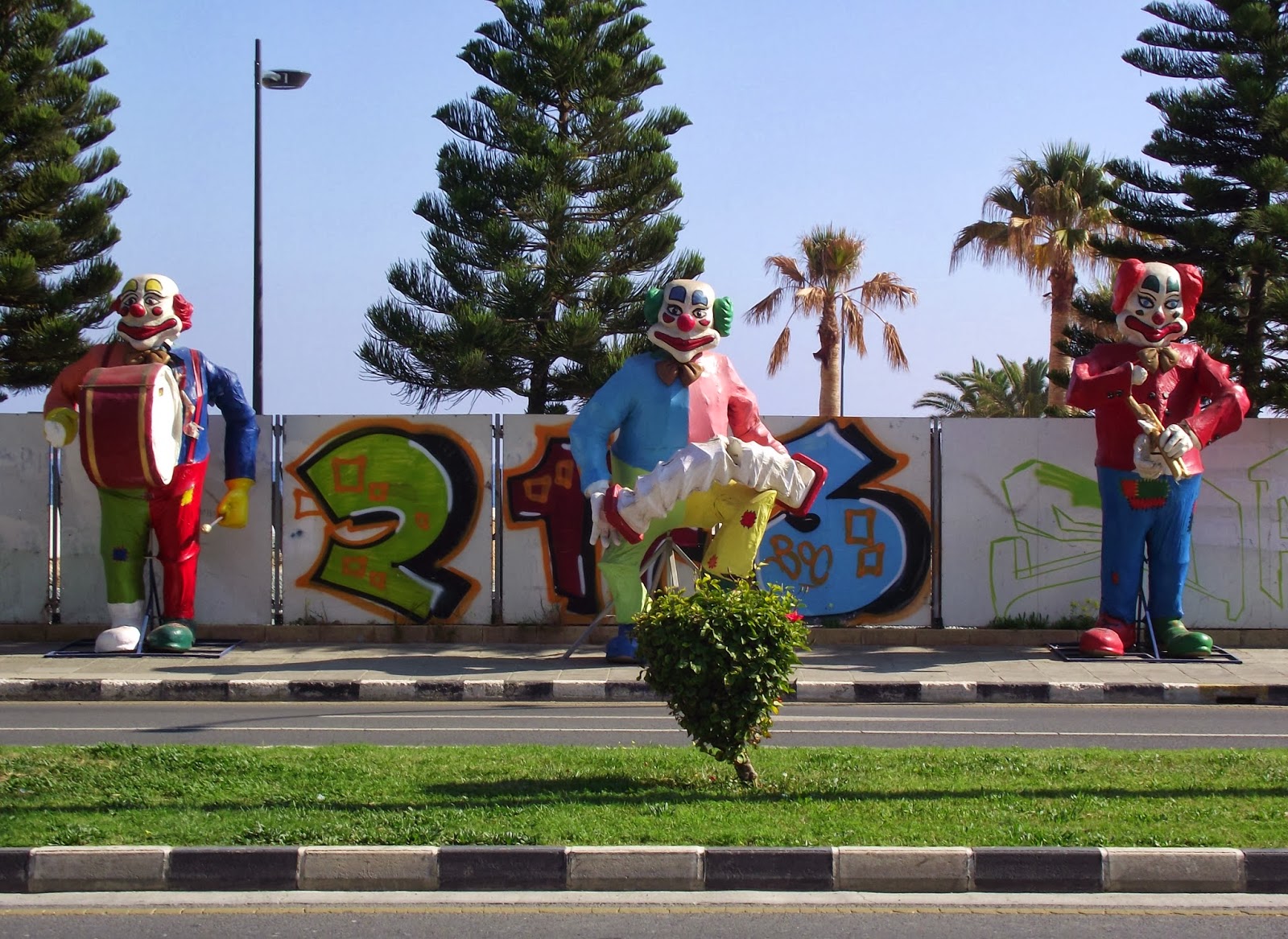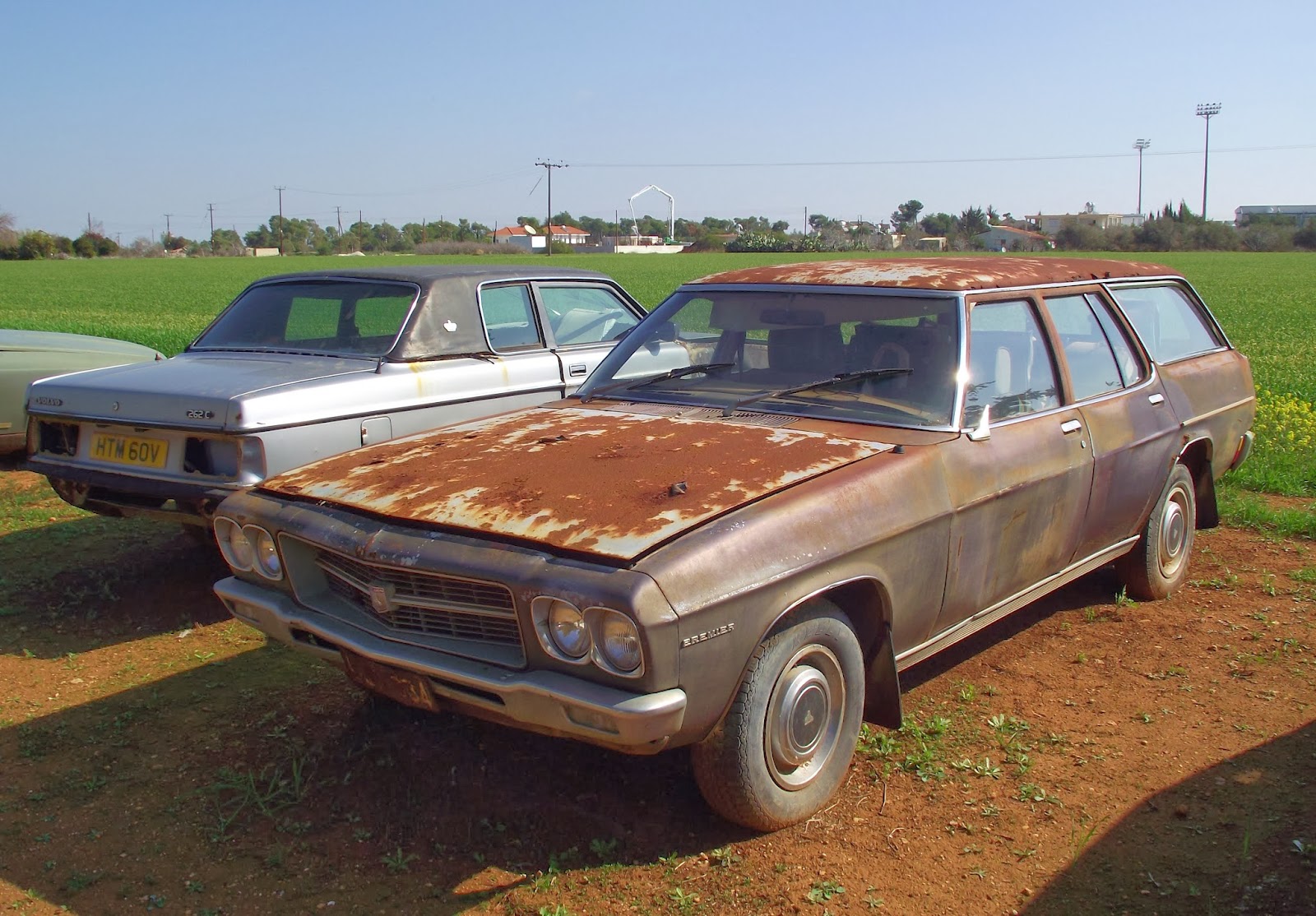Archaeology : Architecture : Art : Cold War : Curiosities : Design : Eccentricities : Ekco : Engineering : Industrial Heritage : Military : Petroliana : Photography : Shed Wonders : Transporter Bridges : Vintage Technology
20 February 2014
Limassol, Cyprus - Town
With a population of just over 100,000, Limassol - also Lemesos, its older name - is the largest town in Cyprus. The town is one of contrasts, touristy lanes in the centre and the more interesting dusty corners of the area immediately outside this.
Limassol makes a strong claim to be one of the oldest continuously-inhabited towns in the world, its roots stretching back to 2000 BCE.
Richard the Lionheart, on his way to the third crusade, called here in 1191, when Cyprus came under the control of the Anglo-Normans. It was sold a year later to the Templars.
It can seem as though everyone has controlled Cyprus at some time. The French, the Venetians, the Ottomans, and again the British, from 1878. The British Sovereign Areas of the island remain a key military asset.
Limassol's role as a tourist destination took off when the Turkish invasion of 1974 lead to Famagusta and Kyrenia, the previous key resorts, being occupied. They continue so, in defiance of numerous United Nations resolutions.
Labels:
Archaeology,
Architecture,
Photography
Limassol, Cyprus - Carnival
Limassol is home to a number of festivals, principal amongst which is Carnival, which lasts for a full ten days.
Like all good celebrations, Carnival is pagan in origin. There is much eating, drinking and otherwise making merry.
Carnival commences with King Carnival, heading a large parade of wood, chicken wire and papier-mâché characters on floats, akin to the tableaux of Lewes Bonfire.
There follow fancy-dress balls and competitions, masquerade parties, folk dancing, and more eating and drinking.
Labels:
Curiosities,
Photography,
Travel
19 February 2014
Cyprus Car Graveyard

In eastern Cyprus, on the road north from Dhekelia, towards Achna, is a house-cum-workshop surrounded by dozens of British, French, Italian, German, Swedish, Japanese and American cars of the 1960s onwards, awaiting restoration.
Many are in remarkable condition, and could be easily recommissioned, including a lovely Mercedes 220 (top). There are at least half a dozen Audis: 80s, 100s, an 80 Fastback (above), a 5S, a couple of proper early Quattros, and a muscular Coupé (below).
The Brits are represented by a Triumph 2000 and a number of Jaguars, including two XJS V12s; one set of the colonial cousins by a Chevrolet Beretta, a Lincoln and a 1969 Chevrolet Camaro (below, identified by Rupert Lloyd Thomas); and another set by a couple of Holdens, one a Premier 202 (next below).
The dry conditions have been kind to very many of the cars, which whilst most have suffered some form of accident damage, it would be nice to think might again see the open road. There are quite a few Volvos, including a beautiful P1800 ES, in that icy blue that so suits them.
It is to those Italian cars that are so prone to rot to which the weather has been most kind. Fiat is represented by a 130, a 131S and a 132. There's a bevy of Alfa Romeos, including an early Spider and a pair of Alfettas, the paintwork of one well protected by foliage (below).
One might expect the Saabs to have survived without difficulty - these include a 95 (below) and a 99. Even a Datsun ST is still in one main piece.
It is though on behalf of the French machinery that one is most grateful to the weather. The collection includes a Citroën CX, a Peugeot 604 V6, and no fewer than two instances of the stunning Citroën DS Pallas (below).
Labels:
Curiosities,
Eccentricities,
Petroliana
16 February 2014
First Bakelite Ekco
Ekco's first Bakelite-cased radios were the 312 and the 313, both released in 1930. At this time Ekco, the first wireless manufacturer to make Bakelite cabinets, had these moulded for it by Allgemeine Elektricitätz-Gesellschaft (AEG). The company installed its own presses, under AEG supervision, at its Southend-on-Sea factory in 1931, upon the imposition of high import taxes. The exquisitely-detailed cabinet of the 313, which was available from July 1930 in mahogany (this example), special order medium oak, and special order dark jade, was designed by L. Smithers.
The set had a drum-drive scale, was available in AC (pictured) and DC versions, and cost £22.10s.0d. One then had to buy a loud-speaker. There were two options, the pictured moving-iron cone LS1 Ekcone, at £5, or the moving-coil LS2 Ekcoil, at £11. The wireless and cheapest speaker would have cost over ten weeks' of the average wage of the time, putting it out of reach of all but the most affluent. 84 years on, this 313 is in remarkable, and full working, condition.
Labels:
Design,
Ekco,
Vintage Technology
14 February 2014
Hobbit Mill
Birmingham was once home to innumerable watermills. Grade II-listed Sarehole Mill, on the River Cole in Hall Green, is one of only two left. The mill was founded in 1542, and has gone by various names, including Bedell's Mill and High Wheel Mill. Its true fame lies in it having been leased by the industrialist Matthew Boulton, who used it for rolling iron and drawing wire.

The current building, of 1771, post-dates Boulton's use of the site, and was operated until 1919. The period after WWI saw the ending of very many ways of life that had previously seemed resistant to major change. JRR Tolkein lived immediately nearby as a child, and the mill is cited as inspiration for that in The Lord of the Rings' Hobbiton. Tolkein would be appalled by all the litter in and along the Cole.



















